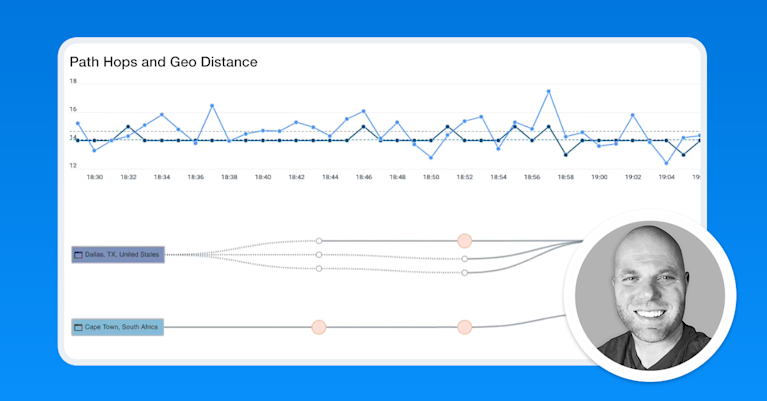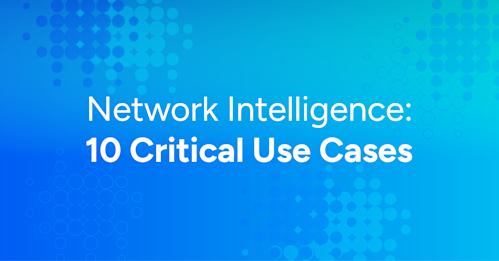Network Traffic Analysis
Understanding the details of network traffic is essential for any modern business network. Network Traffic Analysis (NTA)—sometimes referred to as network flow analysis or network traffic analytics—is the process of monitoring, inspecting, and interpreting network data to understand how and where traffic flows. It is fundamental to ensuring optimal network performance, availability, and security. In this article, we cover what NTA is and why it matters, explain how to analyze network traffic using various methods and tools, share best practices, and show how modern network traffic analyzer platforms (like Kentik) provide end-to-end visibility across on-premises and cloud environments.
What is Network Traffic Analysis?
Network traffic analysis is the practice of continuously monitoring and evaluating network data to gain insight into how traffic moves through an environment. It involves collecting traffic information (such as flow records or packets) and analyzing it to characterize IP traffic – essentially understanding how and where network traffic flows. By using specialized tools and techniques, engineers can examine this data in depth, often in real time, to identify patterns and anomalies. In essence, NTA provides visibility into your network’s behavior by collecting and synthesizing traffic flow data for monitoring, troubleshooting, and security analysis. This visibility is crucial for assuring network health. Without analyzing traffic, it’s difficult to know if your network is operating efficiently or if issues are lurking beneath the surface.
Today’s network traffic analysis extends beyond LAN monitoring, covering data centers, branch offices, and cloud providers. NTA therefore includes analyzing telemetry from on-premises devices (routers, switches, etc.), cloud infrastructure (virtual networks, VPC flow logs, etc.), and even containerized or serverless environments. The scope can range from high-level usage trends down to granular packet inspection.
Because of this broad scope, NTA is sometimes broken down into sub-domains like flow analysis (examining aggregated flow records) and packet analysis (deep inspection of packet payloads). Regardless of method, the objective remains the same: to gain actionable insight into network usage and performance by studying the traffic itself.
Why Network Traffic Analysis Matters
Network traffic analysis plays an essential role in managing and optimizing networks for several reasons:
-
Network Performance Monitoring: By analyzing network traffic, operators can identify bottlenecks, understand bandwidth consumption, and optimize resource usage. Continuous traffic analysis helps apply Quality of Service (QoS) policies and ensures a smooth, efficient experience for users. In essence, NTA helps verify that critical applications get the needed bandwidth and that latency or congestion issues are promptly addressed (see our guide on network performance monitoring (NPM) for more on this topic).
-
Network Security: Inspecting traffic patterns is vital for detecting and mitigating security threats. Unusual traffic spikes or suspicious flow patterns can reveal issues like malware infections, data exfiltration, or a looming distributed denial-of-service (DDoS) attack. Network traffic analysis tools can flag anomalies or known malicious indicators in traffic, giving security teams early warnings. In many organizations, NTA data feeds into intrusion detection and security analytics systems for comprehensive threat monitoring.
-
Network Troubleshooting: Analyzing network traffic helps engineers quickly pinpoint and resolve network issues, reducing downtime. When a problem arises (such as users reporting slow connectivity or an application outage), traffic data can identify where the breakdown is occurring—for example, a routing issue causing loops, or an overloaded link dropping packets. By drilling into traffic flows, NetOps teams can isolate the root cause faster, improving mean time to repair (MTTR) and user satisfaction.
-
Network Capacity Planning: Network traffic analysis provides insight into both current usage and growth trends. By measuring traffic volumes and observing patterns (peak hours, busy links, top talkers, etc.), operators can make informed decisions about expanding capacity or re-engineering the network. This ensures that the network can handle future demand without over-provisioning. Strategic decisions—like where to add bandwidth, when to upgrade infrastructure, or how to optimize traffic routing—rely on data that NTA supplies. (See our article on Network Capacity Planning for more on this topic.)
-
Compliance and Reporting: In regulated industries or any organization with strict policies, NTA helps demonstrate compliance with data protection and usage policies. Detailed traffic logs and analysis can show auditors that sensitive data isn’t leaving the network improperly, or that usage adheres to privacy regulations. Additionally, many compliance regimes (PCI-DSS, HIPAA, etc.) require monitoring of network activity. Traffic analysis fulfills that requirement by providing documented evidence of network transactions and security controls.
-
Cost and Resource Optimization: In modern networks—especially those spanning cloud and hybrid environments—understanding traffic can also mean controlling cost. Analyzing network traffic allows teams to identify inefficient routing (which might incur unnecessary cloud egress fees or transit costs) and optimize traffic paths for cost savings. For example, seeing how much traffic goes over expensive MPLS links versus broadband can inform WAN cost optimizations. In cloud networks, NTA can reveal underutilized resources or opportunities to re-architect data flows to reduce data transfer charges. By correlating traffic data with cost data, operators ensure the network not only performs well, but also operates cost-efficiently.
Network traffic analysis matters because it directly supports a robust, high-performing, and secure network. As networks grow more complex (with multi-cloud deployments, remote work, and IoT devices), having detailed traffic visibility is a necessity for effective network operations.
The definitive guide to running a healthy, secure, high-performance network
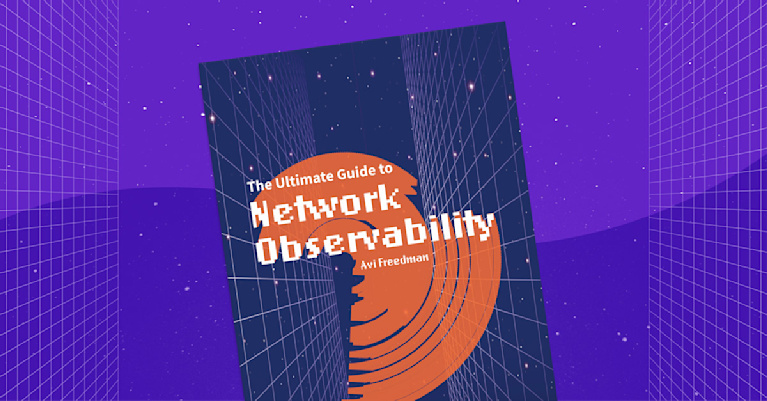
Network Traffic Measurement
Network traffic measurement is a vital component of network traffic analysis. It involves quantifying the amount and types of data moving across a network at a given time. By measuring traffic, network administrators can understand the load on their network, track usage patterns, and manage bandwidth effectively. In other words, measurement turns the raw flow of packets into meaningful metrics (like bytes per second, packets per second, top protocols in use, etc.) that can be analyzed and trended.
Why is Network Traffic Measurement Important?
Traffic measurement provides several key benefits and inputs to analysis, making it integral to efficient network operations:
-
Utilization Awareness: Knowing how much of the network’s capacity is being used at any given time is fundamental. Traffic measurement reveals baseline utilization and peak loads. This helps in planning upgrades and ensuring links are neither under- nor over-utilized. For example, if a WAN circuit consistently runs at 90% utilization during peak hours, that data is a clear signal that capacity should be added or traffic engineering is needed.
-
Traffic Pattern Insights: Measurement data uncovers usage patterns such as daily peaks, which applications or services generate the most traffic, and how traffic is distributed across network segments. These insights help optimize network performance (e.g., by scheduling heavy data transfers during off-peak hours) and manage congestion points. Understanding who and what consumes bandwidth is also useful for network design and policy-making.
-
Troubleshooting & Security Visibility: With granular traffic measurements, operators can quickly spot anomalies or sudden changes that indicate problems. For example, a sudden spike in traffic on a normally quiet link could signal a DDoS attack or a misconfiguration. By measuring traffic on an ongoing basis, teams have the baseline data needed to identify “out-of-the-ordinary” conditions in both performance and security contexts.
-
Bandwidth Management and QoS: Continuous measurement allows operators to enforce fair usage and Quality of Service. By identifying top talkers or high-bandwidth applications, network teams can apply QoS policies or rate limits to ensure one user or service doesn’t unfairly hog resources. It also ensures critical services always have the bandwidth they need.
Methods and Tools for Network Traffic Measurement
There are two primary methodologies for measuring network traffic, each focusing on different aspects of the data:
-
Volume-Based Measurement: This approach quantifies the total amount of data transmitted across the network over a period. It deals with metrics like bytes transferred, packets sent, link utilization percentages, etc. Common tools and protocols for volume-based measurement include SNMP (Simple Network Management Protocol) and streaming telemetry from devices. SNMP-based monitoring tools poll network devices for interface counters (bytes and packets in/out) to gauge traffic volumes. Modern streaming telemetry can push these metrics in real time without the old limitations of periodic polling. Volume-based measurement gives a high-level view of bandwidth usage and is useful for capacity tracking and baseline monitoring.
-
Flow-Based Measurement: This method focuses on flows—sets of packets sharing common properties such as source/destination IP, ports, and protocol. Flow-based tools summarize traffic in terms of conversations or flows, which provides a granular view of who is talking to whom and on which applications. Technologies like NetFlow, IPFIX, and sFlow are classic examples that export flow records from network devices. A flow record might show that host A talked to host B using protocol X and transferred Y bytes over a given time. By collecting and analyzing these records, operators get detailed insight into traffic patterns, top talkers, application usage, etc. Flow-based measurement is essential for understanding the composition of traffic, not just the volume.
In addition to these, specialized hardware or software can aid traffic measurement:
-
Network Packet Brokers (NPBs) and TAPs: These devices aggregate and duplicate traffic from multiple links, allowing monitoring tools to receive a copy of traffic for analysis. They can filter and funnel traffic to measurement tools (like DPI analyzers or collectors) without affecting production flow. NPBs are often used in large networks to centralize the collection of traffic data.
-
Traffic Visibility Solutions: Some modern monitoring platforms provide integrated visibility, combining flow data, SNMP metrics, and packet capture. These solutions aim to give a unified view of network traffic across various segments. For example, Kentik’s platform uses a combination of flow-based analytics and device metrics to present a consolidated picture of traffic and utilization across the entire network.
By leveraging these methods and tools, network operators can effectively measure their traffic. Solutions like Kentik often incorporate both volume and flow measurements (e.g., using SNMP/telemetry for overall volumes and NetFlow/IPFIX for granular flows) to provide a comprehensive set of data.
Methods of Network Traffic Analysis
With raw data in hand (through measurement techniques above), the next step is analyzing the network traffic. There are several methods to collect and analyze traffic data, each with its own use cases and tools:
-
Flow-Based Analysis: This involves collecting flow records from network devices (routers, switches, firewalls, etc.) and analyzing them. As mentioned, flow protocols like NetFlow, IPFIX, and sFlow generate records that summarize traffic conversations. Flow analysis tools ingest these records to identify top sources/destinations, bandwidth usage by application, traffic matrices between sites, etc. Flow-based analysis is very scalable because it dramatically reduces data compared to full packet capture, while still retaining rich information about “who, what, where” of traffic. Modern flow analysis isn’t limited to on-premises devices. It can include cloud flow logs (like AWS VPC Flow Logs, Azure NSG flow logs) which play a similar role for virtual cloud networks. By analyzing flow data, operators gain the network intelligence needed for traffic engineering and optimization (for example, understanding which prefixes consume the most bandwidth or detecting traffic shifts that could indicate routing issues).
-
Packet-Based Analysis: Packet-based analysis entails capturing actual packets on the network and inspecting their contents. This deep level of analysis (often via Deep Packet Inspection, DPI) provides the most detailed view of network traffic. Tools like Wireshark (for manual packet analysis) or advanced probes can look at packet headers and payloads to diagnose issues or investigate security incidents. Packet analysis can reveal things like specific errors in protocol handshakes, details of application-layer transactions, or contents of unencrypted communications. The downside is scale—capturing and storing all packets on a busy link is data-intensive and typically not feasible long-term. Therefore, packet-based analysis is often used selectively (e.g., on critical links, or toggled on during an investigation) or for sampling traffic. It is indispensable for low-level troubleshooting (finding the needle in the haystack) and for certain security forensics. Many organizations use a combination of flow-based monitoring for broad visibility and packet capture for zooming in on specific problems.
-
Log-Based Analysis: Many network devices, servers, and applications generate logs that include information about traffic or events (for example, firewall logs, proxy logs, DNS query logs, etc.). Log-based analysis involves collecting these logs (often using systems like syslog or via APIs) and analyzing them for patterns related to network activity. For example, firewall logs might show allowed and blocked connections, which can highlight suspicious connection attempts. Application logs could show user access patterns or errors that correlate with network issues. A popular stack for log analysis is the ELK Stack (Elasticsearch, Logstash, Kibana), which can ingest and index logs from various sources and let analysts search and visualize network and security events. Log-based analysis complements flow and packet analysis by providing context and event-driven data (e.g., an intrusion detection system’s alerts or a server’s connection error log can direct your attention to where packet or flow analysis should be applied). Ultimately, ogs can be considered another facet of network telemetry and when correlated with traffic data, they enrich the analysis.
-
Synthetic Monitoring (Active Testing): Unlike the above methods which are passive (observing actual user traffic), synthetic monitoring is an active method. It involves generating artificial traffic or transactions in a controlled way to test network performance and paths. Examples include ping tests, HTTP requests to a service, or traceroutes run at regular intervals from various points. By analyzing the results of these tests, operators can gauge network latency, packet loss, jitter, DNS resolution time, etc., across different network segments or to critical endpoints. Synthetic traffic analysis is crucial for proactively detecting issues. You don’t have to wait for a user to experience a problem if your synthetic tests alert you that latency to a data center has spiked. Kentik, for example, offers synthetic testing capabilities integrated with its platform, so you can simulate user traffic and see how the network responds. This method is also referred to as digital experience monitoring because it often reflects user-experience metrics. Synthetic monitoring data, when combined with passive traffic analysis, gives a full picture: how the network should perform (tests) versus how it is performing (real traffic).
Each of these methods provides a different lens on network traffic. In practice, organizations often use a combination. For example, flow analysis might alert you to an unusual spike in traffic from a host, log analysis might confirm that host is communicating on an unusual port, and packet analysis might then be used to capture samples of that traffic to determine if it’s malicious. Synthetic tests might be running in the background to continuously verify that key services are reachable and performing well. Together, these approaches form a holistic network traffic analysis strategy.
Tools for Network Traffic Analysis
A variety of tools and platforms exist to help network operators collect and analyze traffic data. These range from open-source utilities to commercial software and SaaS solutions. Some popular network traffic analysis tools include:
-
Kentik: Kentik is a cloud-based network traffic analysis platform that provides real-time traffic insights, anomaly detection, and performance monitoring at scale. It ingests flow data (NetFlow, sFlow, etc.), cloud VPC logs, and device metrics, storing vast amounts of data in its big-data backend for analysis. Kentik offers a user-friendly web portal and open APIs, making it easy to visualize traffic patterns, set up alerts, and integrate with other systems. As a SaaS solution, it’s designed to handle large, distributed networks (including multi-cloud environments) without the need to deploy complex infrastructure. Kentik’s platform also stands out for applying machine learning to detect anomalies and for its newly introduced AI-based features.
-
Wireshark: Wireshark is a well-known open-source packet analyzer that allows capture and interactive analysis of network traffic at the packet level. It’s invaluable for deep dives into specific network issues. With Wireshark, an engineer can inspect packet headers and payloads, follow TCP streams, and decode hundreds of protocols. This tool provides deep insights into network performance and security by exposing the raw data. However, Wireshark is generally used on a smaller scale or lab settings due to the volume of data. It’s not for continuous monitoring of large networks, but rather targeted troubleshooting.
-
SolarWinds Network Performance Monitor (NPM): SolarWinds NPM is a comprehensive network monitoring platform that includes traffic analysis features. It primarily uses SNMP and flow data to provide visibility into network performance, device status, and fault management. With NPM, operators can see bandwidth utilization per interface, top applications consuming traffic, and receive alerts on threshold breaches. It’s an on-premises solution favored in many enterprise IT environments for day-to-day network and infrastructure monitoring, with traffic analysis being one aspect of its capabilities.
-
PRTG Network Monitor: PRTG is another all-in-one network monitoring solution that covers a wide range of monitoring needs. It uses a sensor-based approach, where different sensors can be configured for SNMP data, flow data (with add-ons), ping, HTTP, and many other metrics. For traffic analysis, PRTG can collect NetFlow/sFlow data to show bandwidth usage and top talkers, as well as SNMP stats for devices. PRTG is known for its easy-to-use interface and is often employed by small to medium organizations for a unified monitoring dashboard covering devices, applications, and traffic.
-
ELK Stack (Elasticsearch, Logstash, Kibana): The ELK Stack is a collection of open-source tools for log and data analysis, which can be leveraged for network traffic analysis especially from the log perspective. By feeding network device logs (e.g., firewall logs, proxy logs, flow logs exported as JSON) into ELK, administrators can create powerful custom dashboards and search through network events. While ELK is not a dedicated network traffic analyzer out-of-the-box, it becomes one when you tailor it with the right data. It’s often used for security analytics and compliance reporting on network data, and can complement other tools by retaining long-term logs and enabling complex queries across them.
Other tools and systems exist as well, from open-source flow collectors (like nfdump, pmacct) to advanced security-oriented analytics tools (like Zeek, formerly Bro, for network forensics). The key is that each tool has strengths. Some excel at real-time alerting, some at deep packet inspection, others at long-term data retention or ease of use. In many cases, organizations use multiple tools in tandem. Increasingly, however, platforms like Kentik aim to provide a one-stop solution by incorporating multiple data types and analysis techniques (flow, SNMP, synthetic, etc.) into a single network intelligence platform.
Best Practices for Network Traffic Analysis
To get the most value out of network traffic analysis, consider the following best practices:
-
Establish Baselines: Determine what “normal” traffic looks like on your network. By establishing baseline metrics for normal operation (typical bandwidth usage, usual traffic distribution, daily peaks), you can more easily spot anomalies and potential issues. Baselines help distinguish between legitimate sudden growth (e.g., business expansion) and abnormal spikes (possibly an attack or misbehavior).
-
Use Multiple Data Sources: Don’t rely on just one type of telemetry. Combining flow data, packet capture, and log data provides a more comprehensive view of network performance and security. Each source complements the others. For instance, flow records might tell you that a host is communicating with an unusual external IP, packet analysis could reveal what that communication contains, and logs might show the timeline of when it started. Merging these views (often called multi-source or full-stack monitoring) is a cornerstone of modern network observability. For more on this topic, see our blog post, “The Network Also Needs to be Observable, Part 2: Network Telemetry Sources,” which discusses various telemetry sources in depth.
-
Leverage Real-Time and Historical Data: It’s important to analyze data in real time to catch issues as they happen, but also to review historical data for trends. Real-time analysis (or near-real-time, with streaming telemetry) allows quick response to outages and attacks. Historical analysis, on the other hand, helps with capacity planning and identifying long-term patterns or repeated incidents. A good practice is to have tools that support both live monitoring (with alerts for immediate issues) and the ability to query or report on historical data (weeks or months back). This combination provides both instantaneous visibility and contextual background.
-
Automate Anomaly Detection: Modern networks are too complex for purely manual monitoring. Implementing automated anomaly detection using AI and machine learning can greatly assist operators. Machine learning models can establish baselines and then alert on deviations that might be hard for humans to catch (for example, a subtle traffic pattern change that precedes a device failure). Many network traffic analysis platforms now include anomaly detection algorithms that flag unusual traffic spikes, changes in traffic distribution, or deviations from normal behavior. Embracing these can reduce the time and effort required for manual analysis, essentially letting the system highlight where you should investigate. For example, Kentik’s platform uses ML-based algorithms to detect DDoS attacks and other anomalies automatically, so network engineers can respond faster.
-
Integrate with Other Tools: Network traffic analysis shouldn’t exist in a silo. Integrating your NTA tools with other IT systems (network management systems, security incident and event management (SIEM) tools, trouble-ticketing systems, etc.) provides a more holistic view and streamlines operations. For example, integrating NTA with a SIEM might send traffic anomaly alerts directly into the security team’s workflow. Or integrating with orchestration tools could trigger automated responses (like blocking an IP or rerouting traffic when an issue is detected). Open APIs, webhooks, and modern integration frameworks make it easier to tie together systems. The result is better network observability across the board, combining data on traffic, device health, and user experience.
-
Continuously Monitor and Optimize: Network analysis is not a “set and forget” task. Continuously monitor your network traffic and regularly review the effectiveness of your analysis processes and tools. As networks evolve (new applications, higher bandwidth links, more cloud workloads), you may need to adjust what data you collect or how you analyze it. It’s a best practice to periodically audit your monitoring coverage. Ensure all critical links and segments are being measured, update dashboards to reflect current business concerns, and optimize tool configurations. Continuous improvement ensures your NTA practice keeps up with the network.
-
Prioritize Security in Analysis: Always remember that one of the most critical outcomes of NTA is enhanced security. Ensure that your traffic analysis routine includes looking for signs of malicious activity. This could mean regularly reviewing top source/destination reports for unfamiliar entries, analyzing traffic to/from known bad IP lists (threat intelligence feeds), and monitoring east-west traffic inside the network for lateral movement. If your tools support it, enable DDoS detection and anomaly alerts. Treat your network traffic analysis system as an early-warning system for breaches or attacks, not just a network performance tool.
-
Invest in People and Processes: Regular training, documentation of analysis processes, and cross-team collaboration are essential. An informed and collaborative team can quickly identify, diagnose, and resolve issues, making the most of your NTA tools.
Following these best practices can significantly improve the effectiveness of your network traffic analysis efforts. They help ensure that you’re not just collecting data, but truly leveraging it to make your network more reliable, secure, and performant.
Network Traffic Analysis for Your Entire Network, with Kentik
Traditional approaches to network traffic analysis often struggled to keep up as networks grew larger and more complex. In the past, network visibility was dominated by single-server or multi-tier appliance architectures, where devices in the network sent data to a centralized collector that often had fixed storage and compute capacity. As traffic volumes grew exponentially, these legacy solutions became inadequate. They could not easily scale to handle cloud workloads, high-frequency telemetry, or long-term data retention needs. This led to gaps in visibility and slow query performance when analyzing large data sets.
Kentik, a modern network intelligence platform, was designed to overcome these limitations. Kentik takes a big data, cloud-native approach. It uses a scalable backend cluster (delivered as a SaaS solution) to ingest and analyze network telemetry at tremendous scale. By leveraging cloud efficiencies and a distributed data engine, Kentik can store months of detailed traffic data and return query results in seconds, even for very large networks. This means network operators aren’t forced to summarize or throw away data. They can retain raw details and always drill down for a “deep dive” when needed.
Crucially, Kentik provides network traffic analysis for your entire network, not just a portion. It covers on-premises infrastructure (data centers, branches, campus networks) and cloud environments in a unified way. Whether traffic is flowing through a router in your data center, an AWS VPC in the cloud, or even a container network, Kentik can ingest that telemetry and make it visible on one platform. It supports a huge variety of data sources: traditional flow protocols (NetFlow v5/v9, IPFIX, sFlow from physical devices), cloud flow logs (from AWS, Azure, Google Cloud, etc.), host-based flow generation (via agents on servers), and streaming SNMP or telemetry from devices. Kentik enriches this data with context like topology, geolocation, and BGP routing information to make analysis even more powerful.
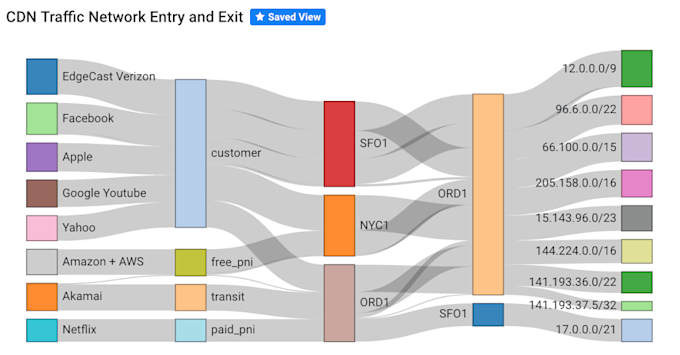
By implementing Kentik’s platform and following best practices, network operators gain a comprehensive, end-to-end view of their networks. They can make informed decisions that improve performance, security, and reliability across the board. Below, we highlight some key capabilities Kentik provides to transform network traffic analysis.
Live Network Intelligence
One of Kentik’s strengths is providing live network intelligence by analyzing traffic data in near real-time. The platform processes incoming flow records and other telemetry almost immediately, enabling up-to-the-minute visibility. This live intelligence is critical for tasks like network capacity planning and rapid troubleshooting. For example, if an interface suddenly sees a surge in traffic, Kentik’s real-time dashboards and alerts will reflect that within moments, allowing operators to react quickly (by rerouting traffic, spinning up additional resources, etc.).
Live traffic analysis feeds both tactical and strategic decisions. On a tactical level, engineers can make faster networking decisions—such as temporarily shunting traffic away from a saturated link or adding a firewall rule to block an ongoing attack—because they see issues as they unfold. Strategically, continuous analysis over time reveals trends that inform planning. Kentik’s real-time analytics, combined with historical views, help answer questions like: At what rate is traffic growing to our data center? Which services are driving that growth? Who should we consider peering with to offload transit traffic?
This kind of intelligence is crucial for optimizing network design and spending. For example, understanding traffic patterns might influence backbone upgrades or peering decisions by highlighting which networks or CDNs you exchange the most traffic with.
Kentik’s platform also leverages AI and machine learning on live data to automatically detect anomalies in traffic, performance, and security across your entire infrastructure. This means the system is continuously watching for things like traffic spikes, sudden drops, or unusual patterns, and can alert you to these conditions (or even trigger mitigations, such as engaging DDoS scrubbing). By catching anomalies early, Kentik helps minimize the impact on network operations. The end result of all this live intelligence is a reduced total cost of network operations – issues are caught sooner, capacity is managed proactively, and the network runs at peak performance with fewer emergencies.
Data Deep Dives
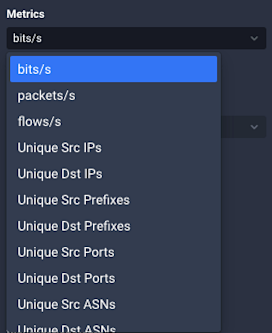
While real-time summaries are great for instant awareness, sometimes you need to investigate an issue in depth. Kentik excels at enabling data deep dives into your traffic. Because the platform stores raw flow records (not just aggregates) for extended periods (up to 90 days or more, depending on retention options), you can pivot and drill down to very granular details when needed.
For example, imagine you see an odd traffic spike to a particular host last week. With Kentik, you could retrieve the actual flow records from that time frame and filter by that host to see exactly what conversations took place. You might drill down by source/destination IP, by protocol, by port number, by autonomous system, by country. Kentik offers over 20+ dimensions (attributes) by which you can slice the data.
This allows questions like, Was that spike part of a DDoS attack (e.g., lots of small flows from many sources) or a large data transfer (one big flow)? Did it target a specific port (maybe a particular application)? Was it coming from a single geographic region or many? Kentik’s interface lets you apply these filters easily and see results quickly, even across billions of flow records.
The deep dive analysis capability is not limited to troubleshooting performance. It’s equally useful for security forensics. For instance, if an anomaly alert suggests a possible DDoS attack, an engineer can use Kentik to confirm by looking at the detailed flows: a flood of UDP packets from thousands of source IPs would be a telltale sign. Because Kentik retains actual flow data, you aren’t guessing from summary statistics–you have the evidence at hand. This dramatically improves confidence in diagnosis. In contrast, legacy systems that only kept aggregated data might show that bandwidth spiked, but not be able to show the distribution of sources or destinations that caused it. Kentik avoids that limitation by storing unsummarized data.
In practice, users find that Kentik’s ability to “zoom in” on any timeframe or subset of traffic streamlines both incident response and routine analysis. You can investigate after-the-fact incidents (What happened at 2 AM last Monday?) or drill into current traffic (What flows are on this interface right now causing high utilization?). This flexibility means less time spent guessing and more time with concrete answers. When every minute counts during an outage or security incident, having those data deep dives at your fingertips is invaluable.
How Kentik Supports Network Traffic Measurement
Kentik’s platform doesn’t just analyze data; it also provides robust network traffic measurement capabilities as the foundation. In fact, Kentik can be thought of as both a data collector and an analytics engine. Here’s how it supports key measurement needs:
-
Volume-Based Measurement: Kentik can ingest device metrics via SNMP polling and streaming telemetry to gauge traffic volumes on interfaces, CPU loads, memory usage, and more. Through its Kentik NMS (Network Monitoring System) module, Kentik normalizes these metrics and makes them available alongside flow data. The platform gives a comprehensive view of utilization across all network segments, showing which links or sites are most heavily used. You can trend usage over time, set alerts for when utilization crosses certain thresholds, and predict future capacity needs with built-in forecasting. Essentially, Kentik covers the traditional network monitoring aspect (device and interface stats) within the same interface that you use for traffic analysis, eliminating the need to swivel-chair between different tools.
-
Flow-Based Measurement: Kentik was originally built with a focus on flow data, and it supports a wide array of flow protocols out of the box, Whether you have Cisco NetFlow, Juniper J-Flow, IPFIX, sFlow, or cloud-specific flow logs, Kentik can ingest all of them and unify the records for analysis. The platform’s backend is optimized for handling extremely high flow rates, which is crucial for large networks emitting millions of flow records per second. By using Kentik as your flow collector, you get immediate analytics on top of the collected flows. The measurement (collection) and analysis are part of one workflow. Operators can easily drill into specific flows to investigate performance issues or security incidents, as described in the deep dive section above. This capability turns raw flow export into actionable insight with minimal delay.
-
Automated Anomaly Detection: As part of measurement and monitoring, Kentik’s analytics engine continuously evaluates incoming data for anomalies. The system establishes baselines for various traffic metrics and uses behavioral analysis to flag deviations. For example, Kentik can automatically detect if traffic to a particular host suddenly deviates from its normal pattern (which might indicate a problem or an attack). These anomalies are highlighted in the UI and can also trigger alerts via email, SMS, or integration with tools like Slack or PagerDuty. In the context of measurement, this means Kentik not only collects data but interprets it to tell you what’s interesting right now. An operator might log in and immediately see a dashboard card showing “Unusual Traffic from Region X to Service Y” and then click in to investigate further. This proactive approach helps turn measurement into actionable intelligence.
-
Holistic Views: Kentik’s integration of multiple data types means you can correlate volume metrics with flow details in one place. For example, if an interface’s utilization spikes (volume perspective), you can pivot to see which flows on that interface caused it (flow perspective) without leaving the platform. Likewise, if a synthetic test shows increased latency to an application, you could simultaneously check flow data to see if any traffic changes correlate with that. By breaking down traditional silos between “SNMP monitoring” and “traffic analysis,” Kentik provides a holistic view of network performance and health.
Kentik supports network traffic measurement by collecting the key telemetry (both volumetric and flow-based) from across your infrastructure and cloud, then layering intelligence on top of it. This empowers network operators to base their decisions on real data, in real time.
Network Traffic Visualization with Kentik
Having data is only part of the equation – being able to visualize network traffic is crucial for quick understanding. Kentik provides rich network traffic visualization features that give a clear view of your entire network, including both the parts you own and those you utilize in the cloud.

One key visualization is Kentik’s network topology maps. The platform can automatically build live maps of your network infrastructure, showing how devices (routers, switches, cloud VPCs, etc.) connect to each other and to the internet. These maps are kept up-to-date and can overlay traffic data on the links. For example, a link between a router and an ISP can be color-coded based on utilization or can display the current traffic rate. This helps operators instantly spot where congestion might be occurring. In a multi-cloud environment, you might see connections between your on-prem data center and your cloud deployments (via VPNs or Direct Connect/ExpressRoute links) with traffic levels indicated, giving a unified view of hybrid cloud connectivity.
Beyond topology, Kentik’s dashboards and charts allow detailed traffic breakdowns to be visualized. You can create charts showing traffic by application, by country, by ASN, by any dimension in the data. These visualizations make it easy to interpret trends (rising, falling), compare segments (how does traffic to Cloud A vs Cloud B differ), or spot outliers. For example, a pie chart might show the proportion of traffic by service (web, email, streaming, etc.), or a time-series graph might compare inbound vs outbound traffic over the past week. Kentik’s UI is built for network operators, so common tasks like visualizing top “talkers and listeners” (sources/destinations) or drilling down from a high-level graph into a specific subset are all straightforward.
Importantly, Kentik’s visualizations aren’t limited to on-prem data. They let you visualize all cloud and network traffic in one place. Whether data is coming from an AWS VPC Flow Log, an Azure NSG log, or a Cisco router’s NetFlow, it’s normalized in Kentik’s data engine so that you can put it on the same graph or map.
Finally, Kentik’s visualizations support operational workflows like capacity planning and troubleshooting. If a stakeholder asks “is the network affecting our application performance?”, a Kentik user can quickly generate a visualization of traffic and performance metrics relevant to that app (e.g., a dashboard showing traffic volume, packet loss, and latency over time for the app’s key links). This at-a-glance view can confirm if the network is healthy or pinpoint where issues might lie. The ability to present complex data in a digestible visual form means faster comprehension and easier communication with non-network stakeholders.
Network Traffic Visibility and SaaS Advantages
Kentik’s approach to network traffic analysis is delivered as a SaaS solution, which brings several advantages in terms of visibility and ease of use. As a cloud-based service, Kentik is purpose-built to deliver real-time traffic intelligence without the administrative overhead of managing the monitoring infrastructure yourself. This means no servers for you to provision, no databases to maintain. You get the benefits of the platform simply by sending it your data.
One major advantage of Kentik’s SaaS model is scale and speed. The back-end cloud infrastructure can scale up to handle ingestion of millions of flow records per second and terabytes of data, which would be challenging for many enterprises to deploy on their own.
Queries that might take a long time on a limited on-prem appliance return in seconds on Kentik, due to its distributed cloud architecture. This allows for interactive exploration of data even in very large networks, encouraging engineers to ask more questions and thus gain more insights. The system’s super-fast query response and the ability to handle detailed information at scale translate into a more detailed and timely understanding of network traffic.
Another benefit of Kentik’s modern design is an open, API-driven architecture. Everything you can do in the Kentik portal can also be done via APIs, which means integration and automation are first-class capabilities. Want to export traffic analysis reports to another database, or integrate alerts into your DevOps workflow? The platform makes that possible. This openness ensures that Kentik can fit into your existing ecosystem of tools, rather than being a black box. It also means you can script custom analyses or pull data into your own dashboards if needed.
Kentik’s user interface is built by and for network operators, which emphasizes practicality. It’s not just pretty graphs. It’s designed to answer the questions network teams ask daily. Common workflows (like investigating a traffic spike or setting up a capacity report) are streamlined. And because it’s SaaS, new features and improvements roll out continuously without users having to perform upgrades.
For example, when Kentik introduced its new Kentik NMS (Network Monitoring System) and Kentik AI features, those became instantly available on the platform. (See Reinventing Network Monitoring and Observability with Kentik AI). This rapid innovation cycle is a significant advantage over legacy tools that might see updates infrequently.
Kentik’s platform today encompasses all three pillars of modern network monitoring: Network flow visibility, synthetic testing, and network infrastructure metrics. In practical terms, this means when you use Kentik, you are addressing traffic analysis, active monitoring, and device health in one solution. For example, you can visualize flow data alongside the results of a synthetic test, and also see the SNMP metrics from the routers involved. This is a holistic type of observability that’s hard to achieve with separate point tools.
The integration of Kentik’s next-generation NMS (for device metrics) with its advanced traffic analytics and synthetic testing is particularly powerful. It consolidates what used to require multiple platforms into a single pane of glass. The outcome is not only a more comprehensive view of the network, but also reduced total cost of ownership and operational simplicity (one system to manage instead of several).
Finally, Kentik has recently augmented its platform with Kentik AI, which includes capabilities like a natural language Kentik Query Assistant and Kentik Journeys for guided troubleshooting. These features embody how a SaaS platform can quickly evolve to leverage cutting-edge tech. With Kentik Query Assistant, users (even those not expert in the Kentik query interface) can ask questions about network traffic in plain language and get immediate answers drawn from their data.
For example, a user could type “Show me top sources of traffic to my web servers in the last hour” and get a relevant visualization or result without building the query manually. Kentik Journeys provides an interactive, conversational workflow for troubleshooting, where each follow-up question refines the investigation. The AI keeps track of context—understanding the devices, applications, and patterns in your network—so it can help guide you to root cause faster.
These AI-driven enhancements further lower the barrier to effective network traffic analysis, enabling even non-specialists (like developers or SREs) to glean insights from network data. It’s a glimpse into the future of network analytics: where the platform not only presents data, but also assists you in making sense of it.
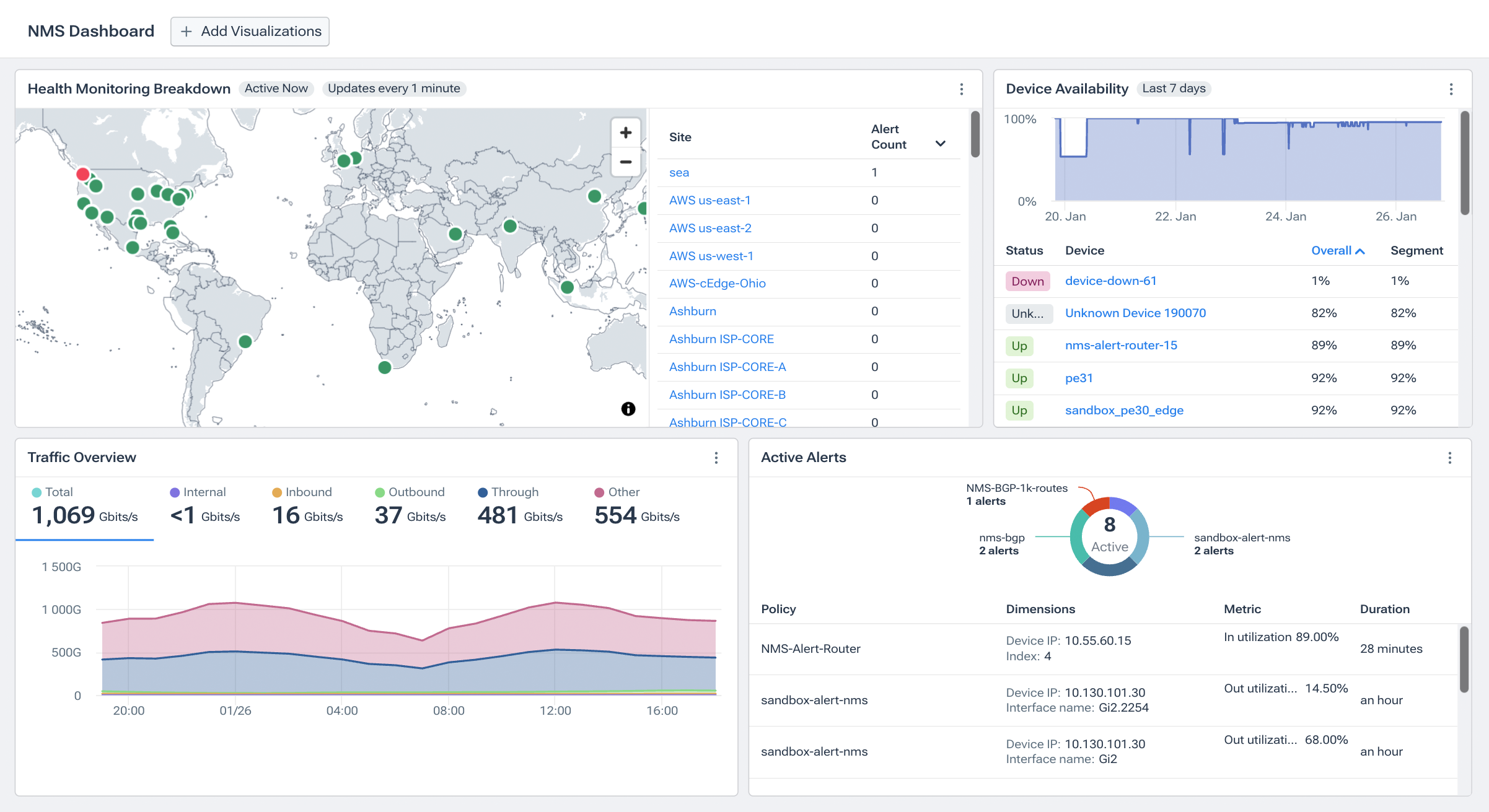
To experience Kentik’s network traffic analysis features for yourself, start a free trial or request a personalized demo.

